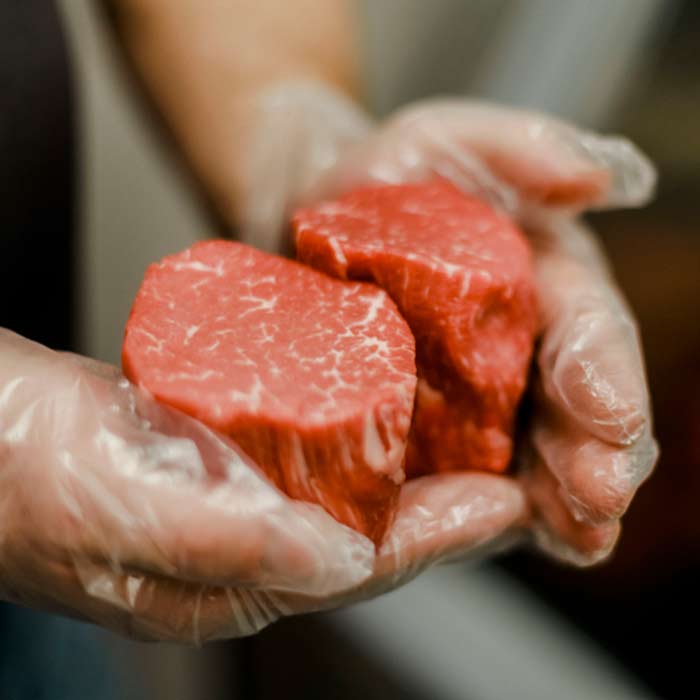Uncover the Art of the Butcher's Cut in a Modern Meat Market
In the ever-evolving landscape of modern meat markets, the butcher's cut has actually transcended its traditional roots, merging olden workmanship with contemporary techniques. What genuinely sets the modern-day butcher apart is their ability to create a much deeper link between customers and the beginnings of their meat.
Advancement of Butchery Strategies
The evolution of butchery strategies shows a rich tapestry of advancement and adjustment driven by innovations in modern technology, modifications in customer need, and a deeper understanding of meat scientific research. Historically, butchery was a craft gave through generations, with methods honed over centuries to make best use of return and flavor. Nevertheless, the commercial change introduced mechanization, changing standard methods and allowing large-scale processing.
The mid-20th century saw butchery techniques further fine-tuned by clinical understandings right into muscle mass biology and meat aging, boosting both inflammation and preference. Innovations like vacuum cleaner product packaging and refrigeration expanded product shelf-life, allowing butchers to diversify offerings and enhance quality assurance. This period additionally noted the surge of specialized equipment, such as band saws and meat slicers, which boosted accuracy and effectiveness in meat handling.

Electronic systems currently aid in monitoring animal provenance and maximizing cuts to meet specific consumer choices. In addition, a resurgence in artisanal butchery has actually arised, blending standard skills with modern knowledge to provide to consumers looking for honest and lasting meat options.
Recognizing Meat Cuts
Understanding the details of meat cuts is important for both butchers and consumers looking for quality and worth. For butchers, exact cuts show ability and regard for the craft, making certain marginal waste and optimal yield.

Understanding muscle mass composition is important; muscles utilized a lot more often by the animal often tend to be tougher and are best suited for slow cooking techniques, while less-used muscles, like those discovered in the loin, are much more tender and perfect for cooking or roasting. Knowledge with these distinctions encourages consumers to make informed selections, improving their cooking ventures.
Choosing Top Quality Meat
Choosing the ideal meat involves even more than just picking a visually enticing item from the display. The art of choosing top quality meat calls for a critical eye and understanding of specific qualities that represent quality and quality.
Second of all, take into consideration the marbling, which refers to the white flecks of fat within the muscle. Proper marbling is a vital indicator of tenderness and flavor, as it melts during cooking, boosting the meat's juiciness. Bear in mind, higher marbling frequently associates with premium high quality cuts, such as USDA Prime.
Texture is one more important factor; meat ought to really feel firm to the touch, learn this here now not slimed or extremely soft. Furthermore, bear in mind the scent. Fresh meat needs to have a clean, neutral scent, totally free from any kind of sour or repulsive odors.
Combining Cuts With Cooking Methods

Conversely, harder cuts like brisket and chuck roast are abundant in collagen, which damages down into jelly when prepared slowly. These cuts are excellent for braising or sluggish roasting, allowing click to read more the meat to tenderize over time and create deep, complicated tastes. Likewise, cuts such as short ribs and pork shoulder get on well with slow-cooking methods, where expanded cooking times change their robust textures right into delicious meals.
Lamb shanks and oxtail, which need extended cooking to soften, are ideal prospects for cooking or sluggish simmering. These techniques coax out rich, passionate flavors while maintaining dampness. By recognizing the special features of each cut, chefs and home chefs alike can elevate their cooking productions, guaranteeing each recipe is both pleasing and memorable.
The Butcher's Function Today
Navigating the progressing landscape of the modern-day meat market, the butcher's function today expands past plain prep work of cuts. Contemporary butchers are culinary artisans, educators, and supporters for lasting methods.
Along with crafting precise cuts, butchers now engage straight with customers, using cooking suggestions and customizing options to suit private demands and choices. Their proficiency in meat aging, marbling, and flavor accounts encourages consumers more helpful hints to make enlightened choices, boosting their culinary experiences. This individualized service exhibits the butcher's advancing role as a relied on consultant in the kitchen area.
Additionally, butchers are pivotal in decreasing waste, making use of entire animals to create varied products such as sausages and stocks. This detailed strategy not only respects the animal however also straightens with contemporary sustainability goals. By doing this, the modern-day butcher embodies both tradition and technology, adapting to an ever-changing market while maintaining the artistry and integrity of their craft.
Conclusion
Mastery in recognizing diverse meat cuts and quality indications encourages butchers to offer informed suggestions, straightening specific cuts with ideal cooking approaches. By honoring historic practices while embracing modern demands, the butcher's duty stays crucial in today's advanced meat market.